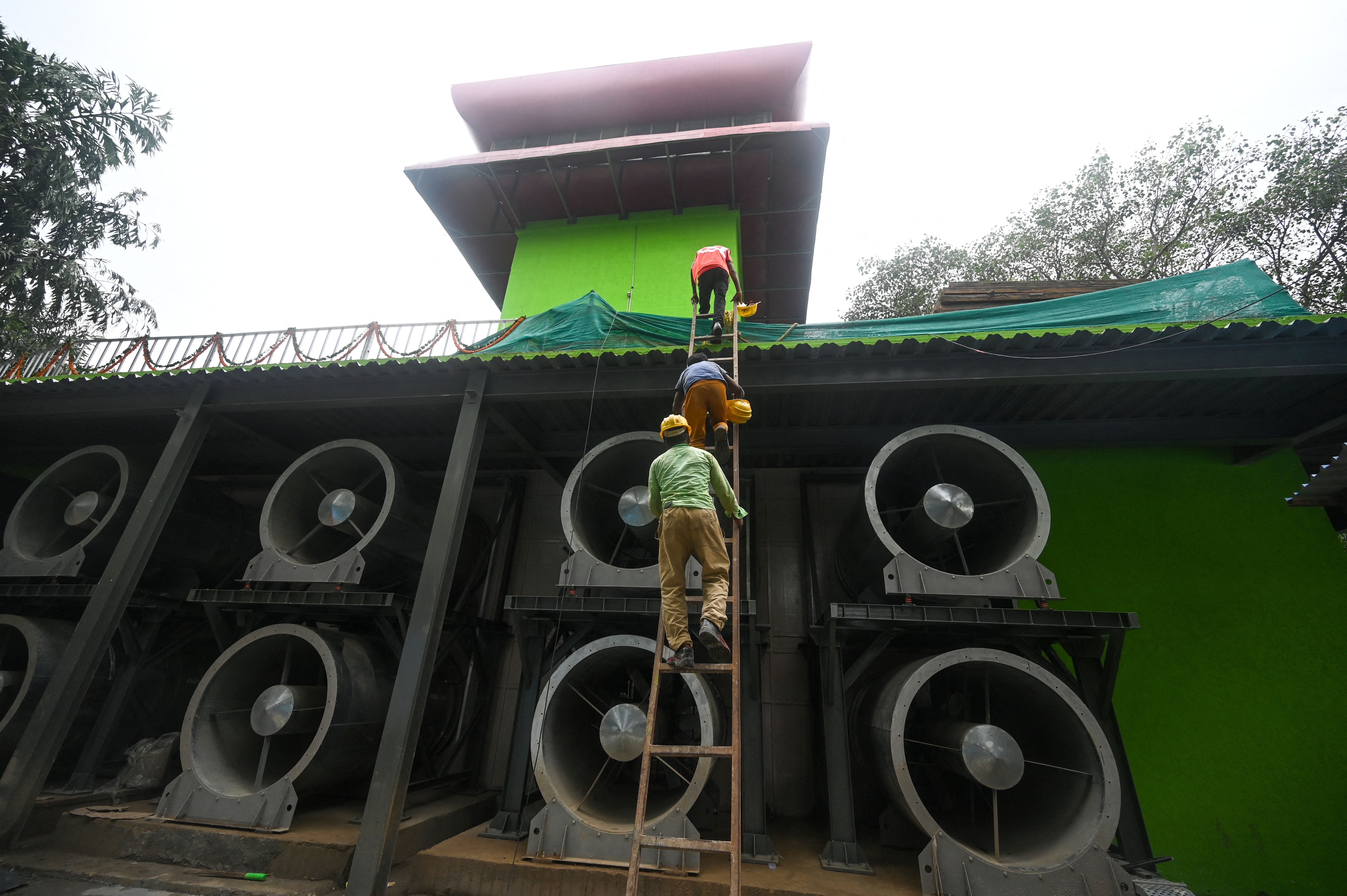How Delhi plans to induce artificial rain to fight toxic air pollution
Indian national capital’s government aims to use cloud seeding to give residents temporary relief
Delhi’s government is exploring a new strategy to tackle the annual problem of toxic air pollution – inducing artificial rain over the national capital.
The Indian capital’s administration struggles every winter to improve the air quality for its 35 million residents. Experts have said Delhi’s annual dilemma should be treated like a disaster event.
While the government puts in place similar measures every winter to try and tackle pollution, officials are now also considering a different, albeit temporary, approach to the problem, with Delhi’s environment minister Gopal Rai announcing plans for cloud seeding, a process to induce artificial rains.
Mr Rai said he met with specialists from the Indian Institute of Technology, Kanpur to discuss plans for inducing rain, which helps with settling down dust and pollutants to temporarily improve air quality.
“We have asked them to send us the proposal on artificial rain by tomorrow [Thursday] so that it can be produced before the Supreme Court for necessary permissions,” Mr Rai had told Indian news agency PTI.
Part of the problem with cloud seeding is that it can only be carried out when there is already sufficient moisture in the air. Mr Rai said Delhi is expected to have the appropriate cloudy weather conditions to attempt to induce rain on 20-21 November.
The announcement comes as the city’s ranking on the Air Quality Index (AQI) remained in the “severe” category – the worst of the five colour-coded categories made by India’s Central Pollution Control Board (CPCB) – for the eighth straight day.
The AQI in most of Delhi’s regions on Thursday was around 400 out of a maximum 500 on the scale.

These dangerously high levels of air pollution are stoked by smoke from farm fires that enter the city from nearby agricultural regions at the beginning of every winter.
The latest attempt is part of a series of technical measures announced by the Delhi government to mitigate harmful air pollution that has severe consequences for the health of the city’s entire population.
Last week, authorities announced routine measures to shut private schools and ban all construction activities. They also announced the return of the annual “odd-even rule”, a vehicle rationing scheme in which only cars ending with either odd or even numbers are allowed on the road on alternate days.
What is cloud seeding?
For inducing artificial rainfall, chemicals like silver iodide, potassium iodide and dry ice are shot into existing clouds using aeroplanes or helicopters to help form ice crystals.
These crystals help make the cloud’s moisture content heavier and more likely to be released so it can produce more rain.

“Certain nuclei are sprinkled into the clouds to facilitate cloud condensation, leading to rainfall,” Mrutyunjay Mohapatra, the director general of the India Meteorological Department (IMD), was quoted as saying by PTI.
Cloud seeding has been successfully experimented with in other parts of India and the world. But experts say its usage remains limited in the country.
“In India, research on artificial rain is ongoing, but it has not made significant progress so far,” said the IMD chief.
Also read: Why Delhi’s smog towers are an ‘unscientific’ answer to air pollution in India
Last year, China used cloud seeding technology to induce rainfall for its shrinking Yangtze river. This was done as the country grappled with large-scale drought amid its worst heatwave on record.
Can inducing rainfall bring air pollution down?
Rainfall can help reduce pollution levels as it acts as a natural cleanser. Raindrops settle dust and dissolve pollutants.
Experts said it can be an effective measure in the short term, but does not represent a long term sollution given high levels of air pollution would be expected to return once the rain ends.
Manindra Agrawal, a professor in the computer science and engineering department at IIT Kanpur, told The Economic Times that artificial rain could provide temporary relief for up to a week to Delhi residents.
The effectiveness of cloud seeding significantly depends on specific atmospheric conditions and experts have been pointing out that a lot more research is needed to understand its limitations and impact.
This isn’t the first time the Delhi government has employed a different approach to tackle the city’s toxic air.
In 2021, authorities built two 80ft high “smog towers” at a cost more than $2m each.

They were supposed to clean the city’s air despite concerns raised by scientists over their lack of effectiveness. The towers did not yield any significant results.
Shweta Narayan, global climate and health campaigner at the international non-profit Health Care Without Harm, said the Delhi government needs to address the root cause of pollution, instead of treating it as a technical problem.
“The air pollution crisis needs to be treated as a human problem and not a technical problem,” Ms Narayan told The Independent.
Most of the solutions deployed by the Delhi government have been “posturing” and “hogwash”, she said, adding that there is a requirement for stricter regulations and enforcement.
Join our commenting forum
Join thought-provoking conversations, follow other Independent readers and see their replies
Comments
Bookmark popover
Removed from bookmarks